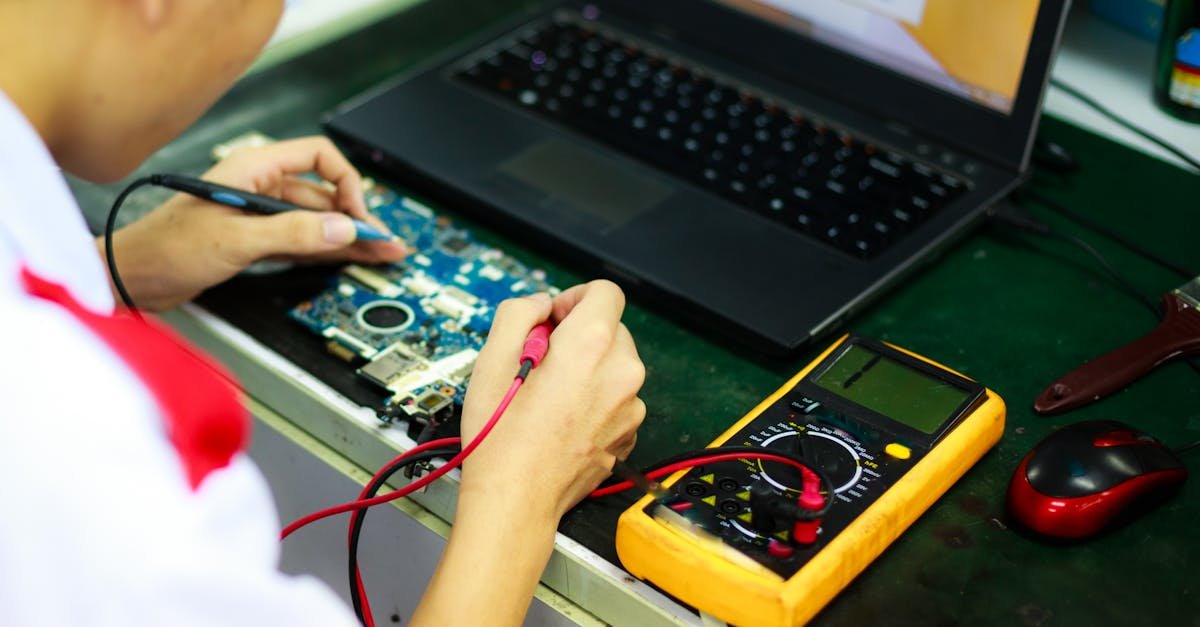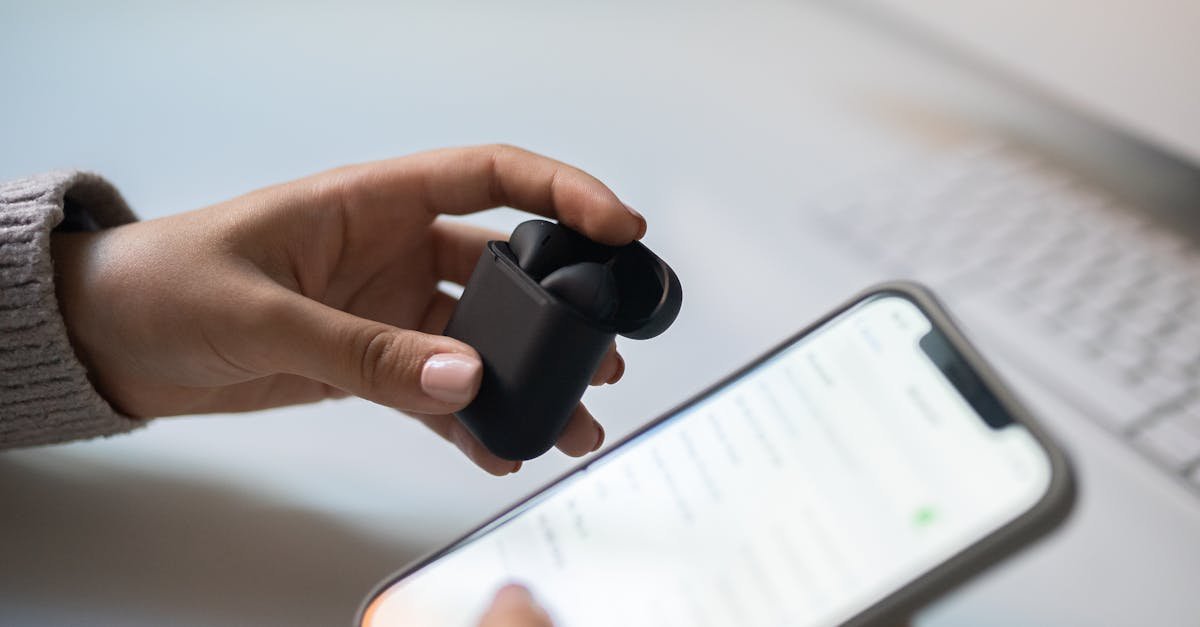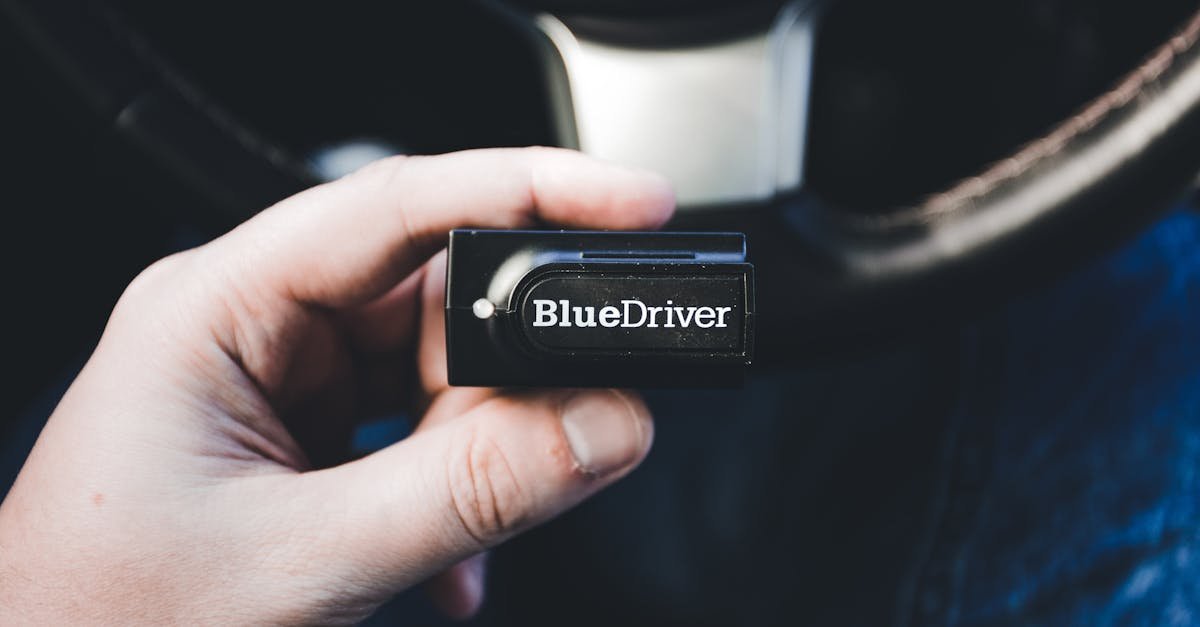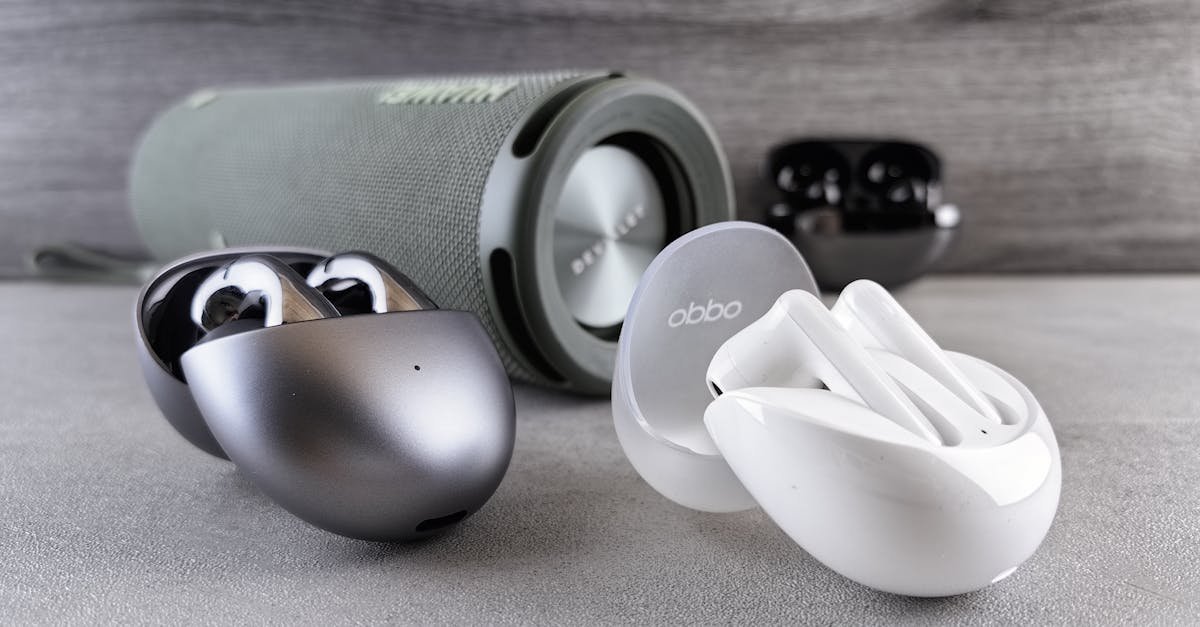Understanding Bluetooth and Why Pairing Fails

Let’s dive into the world of Bluetooth, a technology that has become ubiquitous in our daily lives. From connecting your headphones to your phone to linking your keyboard to your tablet, Bluetooth enables wireless communication between devices. But what exactly is Bluetooth, and why does it sometimes fail us? According to Wikipedia, Bluetooth is a wireless technology standard for exchanging data over short distances using radio waves in the 2.4 GHz ISM band. It operates by creating a personal area network (PAN), allowing devices to communicate with each other without the need for physical cables. This is a game-changer, as it allows for greater mobility and convenience.
The “why” behind pairing failures is multifaceted. Bluetooth relies on both hardware and software working in harmony. The hardware components in your devices must be compatible, meaning they need to support the same Bluetooth profiles. These profiles define how devices communicate for specific functions. For example, a Bluetooth mouse uses the Human Interface Device (HID) profile. If your devices don’t share the necessary profiles, they won’t understand each other. Furthermore, as explained in the articles, Bluetooth versions also play a role. While Bluetooth is generally backward compatible, meaning newer devices can often connect to older ones, there can still be compatibility issues, especially with older versions or devices using Bluetooth Smart (low energy) technology. This means that an older device may not be able to connect to a newer one, or vice versa.
Another critical factor is signal interference. Bluetooth operates in the same 2.4 GHz frequency band as Wi-Fi and other devices like Zigbee smart home devices. This can lead to signal congestion and interference, making it difficult for devices to pair or maintain a stable connection. As a tech journalist, I’ve experienced this firsthand, especially when testing multiple Bluetooth devices in a crowded environment. The proximity of other devices, physical obstructions like walls, and even the battery levels of your devices can all impact the pairing process. Bluetooth devices have a limited range, typically around 30 feet (10 meters), and the signal strength can be affected by obstacles. As a result, ensuring your devices are close to each other and free from interference is crucial for successful pairing. I once spent an hour trying to connect a speaker, only to realize it was too far away from my phone!
To summarize, Bluetooth pairing failures can stem from compatibility issues, signal interference, device range limitations, and even simple things like the devices not being in pairing mode or having sufficient battery power. Understanding these underlying causes is the first step toward troubleshooting and resolving these frustrating problems. As the Bluetooth Special Interest Group reports, billions of Bluetooth products are shipped annually, so it’s no surprise that we all encounter these issues from time to time. The good news is that most pairing problems are easily fixable with a bit of patience and the right troubleshooting steps.
General Troubleshooting Steps for Bluetooth Pairing Problems
Now, let’s get down to the nitty-gritty of fixing those Bluetooth pairing problems. This section will provide a series of general troubleshooting steps that you can follow to resolve common issues. Think of it as a checklist to systematically address the most frequent causes of Bluetooth connection failures. I’ve personally used these steps countless times when reviewing Bluetooth devices, and they’ve proven to be highly effective. Remember, the key is to be methodical and patient.
1. Check the Basics: Is Bluetooth Enabled? This might seem obvious, but it’s often the culprit. Make sure Bluetooth is turned on in the settings of both devices you’re trying to connect. On Android, you’ll usually find a Bluetooth toggle in the quick settings panel (swipe down from the top of the screen) or in the settings menu under “Connected devices” or “Bluetooth.” On iOS, you can enable Bluetooth in the Control Center (swipe down from the top-right corner) or in the Settings app. On Windows, type “Bluetooth” in the Start menu search bar. On a Mac, go to System Settings > Bluetooth. I’ve lost count of the times I’ve spent ages troubleshooting, only to realize I’d forgotten to turn Bluetooth on!
2. Device Compatibility and Pairing Mode: Ensure that your devices are compatible with each other. Check the product specifications to confirm that both devices support Bluetooth. Next, understand the pairing process for each device. Most Bluetooth accessories, like headphones and speakers, need to be put into pairing mode. This usually involves pressing and holding a button on the device until a light starts blinking. Refer to the device’s manual or search online for instructions on how to put your specific device into pairing mode. Main devices, such as phones and computers, also need to be in pairing mode, which is typically done through their Bluetooth settings. Remember that pairing mode often has a time limit, so if you take too long, you might need to restart the process.
3. Proximity and Obstacles: Bluetooth has a limited range, typically around 30 feet (10 meters). Make sure the devices are close to each other during the pairing process. Also, be aware of physical obstructions like walls, which can weaken the Bluetooth signal. I once had trouble pairing a speaker in my living room, only to realize a thick wall was blocking the signal. Moving the devices closer together and removing any obstacles can make a big difference.
4. Power Cycle: A simple power cycle can often resolve Bluetooth issues. Turn off both devices, wait a few seconds, and then turn them back on. This can help reset the Bluetooth connection and clear any temporary glitches. This is often the first thing I try when encountering Bluetooth problems, and it works surprisingly often. Sometimes, restarting the Bluetooth service on your device can also help. On Windows, you can try restarting the Bluetooth Support Service in the Services app (search for “services.msc”).
5. Manage Existing Connections: Bluetooth devices can often store pairing information for multiple devices. If your device is already paired with another device, it might be trying to connect to that device instead of the one you want. Check your device’s Bluetooth settings and disconnect or “forget” any previously paired devices that might be interfering. This is especially important for headphones and speakers that automatically connect to the last used device. I’ve often had to disconnect my headphones from my laptop to connect them to my phone.
6. Charge Your Devices: Low battery levels can sometimes affect Bluetooth performance. Make sure both devices are sufficiently charged before attempting to pair them. Some devices might even disable Bluetooth functionality when the battery is critically low to conserve power. This is a common issue with older devices.
7. Delete and Rediscover: If your device sees the Bluetooth device but can’t connect, try deleting the device from your phone or computer’s Bluetooth settings and then rediscover it. On iOS, you can “Forget This Device.” On Android, you can “Unpair.” On Windows, you can “Remove device.” This can help clear any corrupted connection data and establish a fresh connection. This is a more aggressive approach, but it often works when other methods fail.
8. Avoid Interference: As mentioned earlier, Bluetooth can be affected by interference from other devices using the 2.4 GHz frequency band, such as Wi-Fi routers, USB 3.0 devices, and smart home devices using Zigbee. Try moving your devices away from these sources of interference during the pairing process. I’ve found that moving my devices away from my Wi-Fi router often helps with pairing issues.
By systematically working through these general troubleshooting steps, you’ll be well-equipped to resolve most Bluetooth pairing problems. Remember to be patient, as it might take a few tries to get everything working correctly. If these steps don’t work, don’t worry; we’ll delve into more specific solutions in the following sections.
Troubleshooting Specific Bluetooth Device Issues

Sometimes, the general troubleshooting steps aren’t enough. You might encounter issues specific to certain types of Bluetooth devices, such as headphones, speakers, or car audio systems. This section will address some of these specific scenarios and provide tailored solutions. I’ve encountered these issues many times, and I’ll share my experiences and insights to help you overcome them.
1. Headphone and Speaker Pairing Problems: Headphones and speakers are among the most common Bluetooth devices, and they often present unique pairing challenges. One frequent issue is that the device is already connected to another device. As mentioned earlier, most Bluetooth audio devices can only connect to one device at a time. Make sure your headphones or speaker aren’t connected to another phone, tablet, or computer. Disconnect or “forget” the device on the other device before attempting to pair it with your desired device. Another common problem is the device not being in pairing mode. Refer to the device’s manual to learn how to activate pairing mode. This usually involves pressing and holding a button for a few seconds until a light starts blinking. I’ve often found that the pairing button needs to be held for longer than I initially thought.
2. Car Audio System Issues: Pairing your phone with your car’s Bluetooth system can sometimes be tricky. One common problem is that the car’s system might not be compatible with the latest Bluetooth versions or profiles. Check your car’s manual or the manufacturer’s website for information on Bluetooth compatibility. You might need to update your car’s firmware to ensure compatibility with newer phones. The pairing process itself can also vary depending on your car’s make and model. Follow the instructions in your car’s manual to put the system into pairing mode. Some cars require you to enter a PIN code during the pairing process. If you’re unsure of the PIN, try entering “0000” or “1234,” as these are common default PINs. I once spent ages trying to pair my phone with a rental car, only to realize I was entering the wrong PIN!
3. Keyboard and Mouse Problems: Bluetooth keyboards and mice can sometimes experience pairing issues, especially if they’re used with multiple devices. One common problem is that the device is already paired with another computer or tablet. Disconnect or “forget” the device on the other device before attempting to pair it with your current device. Another issue can be driver problems. If you’re using a Bluetooth keyboard or mouse with a computer, make sure you have the latest drivers installed. You can usually download the drivers from the manufacturer’s website. Sometimes, the Bluetooth adapter on your computer might also need a driver update. I’ve found that updating the drivers for my Bluetooth adapter often resolves connectivity issues with my keyboard and mouse.
4. File Transfer Issues: If you’re having trouble transferring files via Bluetooth, there are a few things to check. First, make sure both devices support file transfer via Bluetooth. Not all devices do. Second, ensure that file transfer is enabled in your device’s Bluetooth settings. On Android, you might need to enable “File transfer” or “OBEX” in the Bluetooth settings. On Windows, you might need to enable “Receive files” in the Bluetooth settings. Third, make sure the devices are within range and that there are no obstructions. Finally, check the file format. Some file formats might not be supported for Bluetooth transfer. I once tried to send a large video file via Bluetooth, only to realize it was taking forever. Bluetooth is not designed for transferring large files; it’s much better to use Wi-Fi or a USB cable.
5. Bluetooth Icon Issues: Sometimes, the Bluetooth icon might be grayed out or missing from your device’s settings. This usually indicates a problem with the Bluetooth adapter or driver. On Windows, try running the Bluetooth troubleshooter (search for “troubleshoot” in the Start menu). You can also try uninstalling and reinstalling the Bluetooth adapter in Device Manager (search for “device manager” in the Start menu). On Android, try restarting the Bluetooth service (go to Settings > Apps > Show system apps > Bluetooth Support Service and restart it). On iOS, make sure Bluetooth is enabled in Settings > Privacy & Security > Bluetooth. If the Bluetooth setting is grayed out, try restarting your device. If the problem persists, you might need to contact your device manufacturer for assistance.
By addressing these specific device issues, you’ll be better equipped to troubleshoot and resolve a wider range of Bluetooth pairing problems. Remember to consult your device’s manual for specific instructions and troubleshooting tips. If all else fails, don’t hesitate to seek help from the device manufacturer or a qualified technician.
Advanced Troubleshooting Techniques and Tips

Sometimes, the basic and device-specific troubleshooting steps aren’t enough to resolve persistent Bluetooth pairing problems. This section will delve into more advanced techniques and tips that can help you overcome stubborn issues. These techniques involve digging deeper into your device’s settings, using specialized tools, and even considering hardware-related factors. These are the techniques I use when I’m really stumped by a Bluetooth problem.
1. Clearing the Bluetooth Cache: The Bluetooth cache stores information about previously paired devices. Sometimes, this cache can become corrupted, leading to pairing problems. Clearing the Bluetooth cache can often resolve these issues. The process for clearing the cache varies depending on your operating system. On Android, go to Settings > Apps > Bluetooth > Storage and tap “Clear cache.” On iOS, you can’t directly clear the cache, but you can “forget” all Bluetooth devices and then restart your device. On Windows, you can try deleting the Bluetooth device from the “Bluetooth & other devices” settings and then restarting your computer. On a Mac, you can delete the Bluetooth preference file (com.apple.Bluetooth.plist) in the Library/Preferences folder (use Finder’s “Go to Folder” command). Remember to restart your device after clearing the cache.
2. Driver Updates and Reinstallations: Outdated or corrupted drivers can often cause Bluetooth pairing problems, especially on computers. Make sure you have the latest drivers installed for your Bluetooth adapter. You can usually download the drivers from the manufacturer’s website. In Device Manager (Windows), you can also try uninstalling and reinstalling the Bluetooth adapter. Right-click on the adapter and select “Uninstall device.” Then, restart your computer, and Windows should automatically reinstall the driver. I’ve found that updating drivers is often the key to resolving Bluetooth issues on my laptop.
3. Checking for Firmware Updates: Some Bluetooth devices, especially car audio systems and other more complex devices, have their own firmware that can be updated. Check the manufacturer’s website for firmware updates for your device. Updating the firmware can often fix compatibility issues and improve performance. This is especially important for older devices that might not be fully compatible with newer Bluetooth versions. I once updated the firmware on my car’s Bluetooth system, and it immediately resolved pairing problems with my phone.
4. Using Bluetooth Diagnostic Tools: Some operating systems and third-party software offer Bluetooth diagnostic tools that can help identify and resolve pairing problems. On Windows, you can use the Bluetooth troubleshooter (search for “troubleshoot” in the Start menu). There are also third-party Bluetooth diagnostic tools available online. These tools can help you identify potential issues with your Bluetooth adapter, drivers, and connections. I’ve found these tools helpful in pinpointing the root cause of some stubborn Bluetooth problems.
5. Considering Hardware Issues: In rare cases, Bluetooth pairing problems can be caused by hardware defects. If you’ve tried all the software-based troubleshooting steps and still can’t get your devices to pair, there might be a problem with the Bluetooth adapter in one of your devices. This is more likely if the problem occurs with multiple devices. In this case, you might need to contact the device manufacturer for assistance or consider replacing the device. I once had a Bluetooth speaker that simply wouldn’t pair with any of my devices. After trying everything, I realized the speaker’s Bluetooth module was faulty.
6. Avoiding Interference (Again!): While we’ve mentioned this before, it’s worth reiterating. Interference from other devices can be a major cause of Bluetooth problems. Make sure your devices are not too close to Wi-Fi routers, USB 3.0 devices, or other devices that use the 2.4 GHz frequency band. If possible, try moving your devices to a different location to see if that improves the connection. I’ve found that moving my devices away from my Wi-Fi router often resolves pairing issues.
By employing these advanced troubleshooting techniques and tips, you’ll be well-equipped to tackle even the most challenging Bluetooth pairing problems. Remember to be persistent and methodical, and don’t be afraid to seek help from the device manufacturer or a qualified technician if needed. Sometimes, the solution is simple, but sometimes it requires a bit more detective work.
Multipoint Pairing and Other Advanced Bluetooth Features

Bluetooth technology has evolved significantly over the years, and many devices now support advanced features like multipoint pairing and other enhancements. Understanding these features can help you troubleshoot more complex Bluetooth scenarios and get the most out of your devices. This section will explore these advanced features and provide tips for using them effectively. I’ve personally used these features extensively, and I’ll share my experiences and insights to help you navigate the world of advanced Bluetooth.
1. Multipoint Pairing: Multipoint pairing allows a Bluetooth device, such as headphones or a speaker, to connect to two or more devices simultaneously. This is incredibly convenient, as it allows you to seamlessly switch between listening to music on your phone and taking calls on your laptop, for example. However, setting up and using multipoint pairing can sometimes be tricky. First, make sure your device supports multipoint pairing. Check the device’s manual or the manufacturer’s website. The pairing process can vary depending on the device. Some devices require you to pair with each device separately, while others have a specific process for enabling multipoint pairing. Follow the instructions in your device’s manual. I’ve found that some devices require you to install a companion app to enable multipoint pairing. Once multipoint pairing is enabled, you can usually switch between devices by pausing the audio on one device and starting it on the other. Some devices might also have a button or control for switching between devices. Be aware that not all devices support all Bluetooth profiles simultaneously. For example, your headphones might be able to connect to your phone for music and your laptop for calls, but not both for music. I use multipoint pairing on my headphones all the time, and it’s a game-changer for productivity.
2. Bluetooth Profiles: Bluetooth devices use different profiles to communicate for specific functions. Some common profiles include A2DP (for audio streaming), HFP/HSP (for hands-free calling), and HID (for keyboards and mice). Understanding these profiles can help you troubleshoot issues related to specific Bluetooth functions. For example, if you’re having trouble with audio quality, make sure your device supports the A2DP profile. If you’re having trouble with hands-free calling, make sure your device supports the HFP/HSP profile. Some devices might not support all profiles, which can limit their functionality. I’ve found that some older Bluetooth devices only support the HSP profile, which results in lower audio quality for calls.
3. Bluetooth Versions and Codecs: Bluetooth versions and audio codecs also play a role in audio quality and performance. Newer Bluetooth versions, such as Bluetooth 5.0 and later, offer improved range, speed, and power efficiency. Audio codecs, such as SBC, AAC, aptX, and LDAC, determine how audio is compressed and transmitted over Bluetooth. Higher-quality codecs, such as aptX and LDAC, can provide better audio quality, but they require support from both the source device and the receiving device. Make sure your devices support the same codecs to get the best possible audio quality. I’ve found that using headphones with aptX support significantly improves the audio quality compared to using headphones with only the SBC codec.
4. Bluetooth Low Energy (BLE): Bluetooth Low Energy (BLE) is a power-efficient version of Bluetooth that is often used in devices like smartwatches, fitness trackers, and other Internet of Things (IoT) devices. BLE devices typically use a different pairing process than traditional Bluetooth devices. You might need to use a companion app to pair with a BLE device. Make sure your phone or tablet supports BLE and that you have the latest version of the companion app installed. I use a fitness tracker that uses BLE, and I’ve found that the pairing process is usually straightforward, but sometimes I need to restart the app or my phone to get it working.
5. Bluetooth Security: Bluetooth devices use various security measures to protect your data. These measures include pairing, encryption, and authentication. When pairing a Bluetooth device, you might be prompted to enter a PIN code or confirm a pairing request. This helps prevent unauthorized access to your device. Encryption protects the data transmitted over Bluetooth. Authentication verifies the identity of the devices. Make sure you’re using a secure Bluetooth connection, especially when transferring sensitive data. I always make sure to enter the correct PIN code when pairing a Bluetooth device, and I avoid connecting to unknown or untrusted devices.
By understanding these advanced Bluetooth features, you’ll be able to troubleshoot more complex issues and get the most out of your devices. Remember to consult your device’s manual for specific instructions and troubleshooting tips. As Bluetooth technology continues to evolve, it’s important to stay informed about the latest features and advancements.
Frequently Asked Questions (FAQ)

Here are some frequently asked questions about Bluetooth pairing problems, along with concise answers. These FAQs cover some of the most common concerns and provide quick solutions.
1. Why won’t my Bluetooth device connect?
There are several reasons. Check if Bluetooth is enabled on both devices, ensure they are in pairing mode, and make sure they are within range. Also, check for interference from other devices and ensure your device isn’t already connected to another device.
2. How do I put my Bluetooth device into pairing mode?
The process varies depending on the device. Consult your device’s manual or search online for instructions. Usually, it involves pressing and holding a button until a light starts blinking.
3. What should I do if my Bluetooth device is already connected to another device?
Disconnect or “forget” the device on the other device’s Bluetooth settings before attempting to pair it with your desired device.
4. How can I improve Bluetooth audio quality?
Ensure your devices support high-quality audio codecs like aptX or LDAC. Also, make sure your devices are within range and free from interference.
5. What should I do if the Bluetooth icon is grayed out or missing?
Try running the Bluetooth troubleshooter (Windows), restarting the Bluetooth service (Android), or restarting your device. If the problem persists, you might need to update your Bluetooth adapter drivers or contact your device manufacturer.
